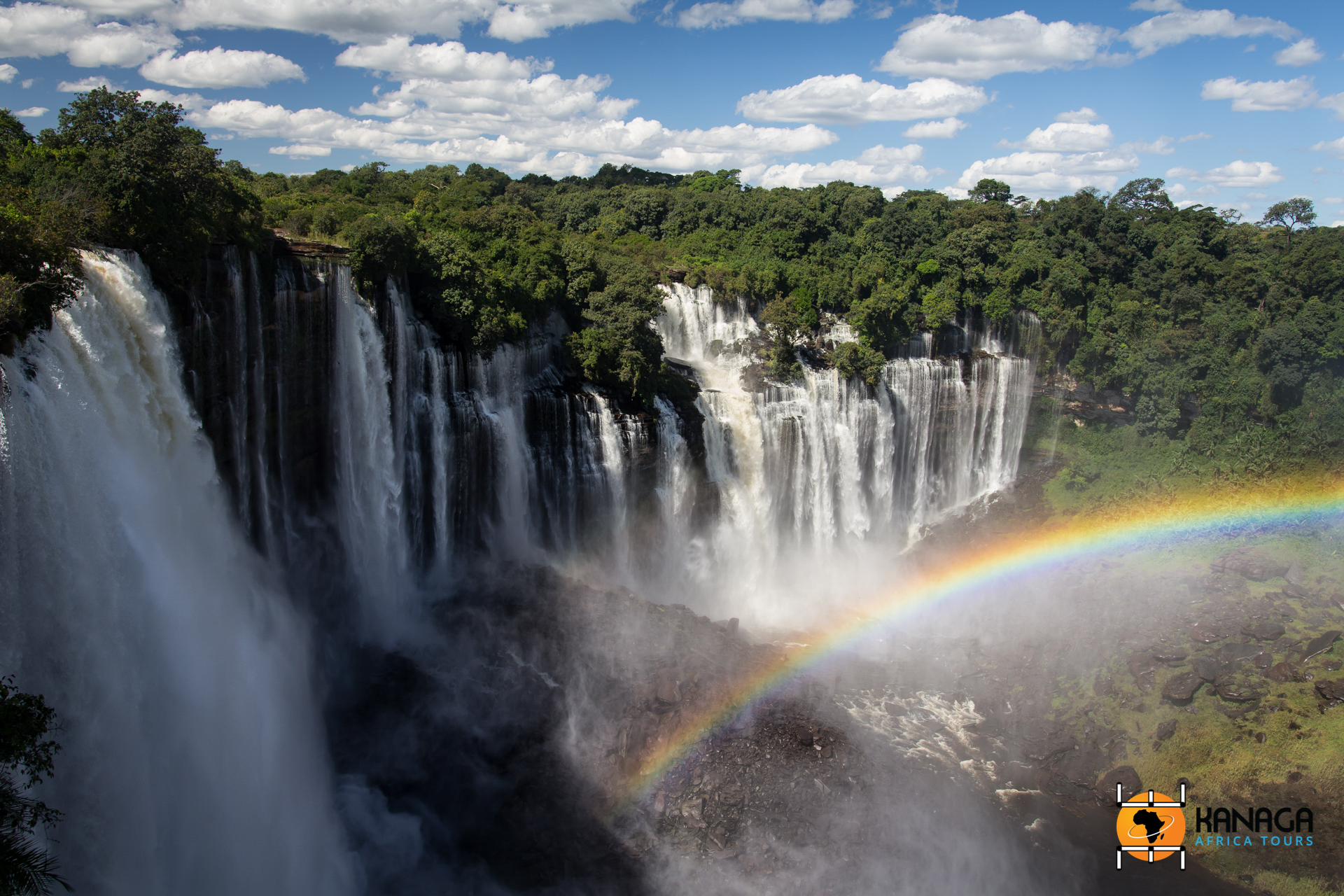The verdant Malanje province in the centre north of the country is home to one of Angola’s most important natural heritage resources, the mighty Kalandula Falls.
400 kilometres far from Luanda, Malanje is an excellent base for discovering the province of the same name. Founded by Portuguese settlers in 1852 and connected to the capital in 1909 by a railway line (still in operation after modernisation in 2012), this town was a hub of cotton production in the first half of the 20th century. Passing through a lush landscape, dominated by the impressive rock formations of the Pedras Negras de Pungo Andongo, where the spirit of Queen Njinga, leader of the resistance against the Portuguese, is said to still live, you arrive at one of the most impressive sites on the African continent: the Kalandula Falls. Christened Quedas do Duque du Braganca in colonial times, the horseshoe-shaped waterfalls, about a hundred metres wide and up to 550 metres high during the rainy season, are the second most powerful in Africa after Victoria Falls. These waters of the Lucala River, the largest tributary of the Kwanza River, are often surrounded by mist and rainbows, making the vision of this site of rare beauty even more ethereal and surreal.






